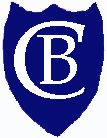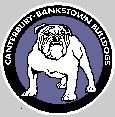|
|
|





Canterbury’s debut season was difficult. Their first match was a 20 points to 5 loss to North Sydney at North Sydney Oval on April 25 Day, 1935. The team comprised of: J.Morrison (captain), G.Main, V.Dwyer, S.Elliott, B.Crawford, H.Brown, T.Carey, F.Sponberg, A.Wellington, J.McConnell, J.Hartwell, R.Lindfield, F.Chaplain. From a satisfactory beginning, the results degenerated. On May 11, St. George smashed the Berries, as they were then known, 91-6 and a week later Easts beat them 87-7. These results remain the records for highest scores in a premiership match. By the final round Canterbury had conceded a massive 660 points, almost 40 points per game!
A major turnaround in form occurred the following year. With a new coach in Frank Burge, Canterbury qualified for the semi-finals in 1936, and by 1938 their rapid improvement continued, winning the competition. They were coached that year by Jimmy Craig, and with Eddie Burns, Roy Kirkaldy and Henry Porter in the front row, the Berries defeated Eastern Suburbs 19-6 ending their three year run.
Canterbury made consecutive semi-finals over the next four years and a victory over St George in the 1942 decider gave the Berries their second premiership. Incredibly they went from premiers to wooden spooners in 1943 and 44, an feat no other club has ever achieved. The Berries rose to minor premiers again in 1947 but were beaten 13-9 to Balmain in the grand final. Over the next 20 seasons the only time Canterbury made the semi-finals was in 1960 when they qualified for a four-way play-off. After two qualification matches, they were beaten by Easts in the first semi-final.
The 1963 season saw the emergence of a young fullback, Les Johns. He toured Great Britain and France with the Kangaroos in 1963-64 and 1967-68, when he was awarded the outstanding player of the tour. In 1967 he helped Canterbury achieve a feat no other club had managed since 1955. They knocked St George out of the premiership, defeating them 12-11 in the final. Canterbury were in their first grand final in 20 years. Souths defeated them 12-10, but only after an intercept try to second-rower Bob McCarthy.
The following couple of years the Berries failed to make the finals. However, with local newsagent Peter Moore contolling the administration of the club, they made the semi-finals in 1970, 71 and 73 the grand final in 1974. On that day Canterbury were beaten 19 points to 4 by a very talented and experienced Eastern Suburb's side. The Berries were semi-finalists in 1975 and 1976, a year that saw the introduction of Canterbury great, Steve Mortimer. The 1978 season brought about a big change of image for Canterbury. Ted Glossop was signed as coach and the "Berries" emblem was shed replaced with the "Bulldogs".
The following season, Canterbury developed into a brilliant attacking team. Two sets of three brothers, the Hughes’ (Garry, Graeme and Mark) and the Mortimers (Steve, Peter and Chris) formed the nucleus of a team that became renown as "The Entertainers". Along with internationals George Peponis, Chris Anderson, John Coveney, Stan Cutler, Steve Folkes, Greg Brentnall and Steve Gearin, the Bulldogs rapidly became a major force. They went down 17-13 to St George in the 1979 grand final but returned to the Sydney Cricket Ground in 1980 to crush Easts 18-4 in the decider. The grand final success which had been out of reach of the club for 38 years had finally become reality.
Along with Parramatta, Canterbury were the dominant force of the 1980’s. Both clubs won four premierships, were involved in five grand finals. When Warren Ryan took the coaching role in 1984, Canterbury transformed from a side with attacking flair to strong defence based team. That year also saw Canterbury great Terry Lamb play his first game in the blue and white. The Bulldogs finished the competition season four points clear of the rest of competition. The grand final was a tough game with both teams scoring one try a piece. Cronin missed a kick near full time leaving the score 6-4. In 1985 Canterbury played inconsistent football until the end part of the season where they won their last 8 games to grab 3rd position. From there they managed to make consecutive grand final appearances, this time against St. George. In a close game, the Bulldogs won back-to-back titles winning 7-6 with a Farrar field-goal making the difference. With Phil Gould taking over as coach in 1988, Canterbury claimed their sixth title. Balmain captured the attention of the rugby league world being the first club to qualify for the big match from fifth position, but Canterbury’s experience showed running away with the match 24-12. Gould, at 30 became the youngest premiership winning coach in the game's history, even younger than some of his players.
Gould made way for former Canterbury star Chris Anderson in 1990 and with a number big name players departing and a rebuilding process began. In 1991, the Bulldogs defied the critics to qualify for a play-off for fifth. They trailed 16-0 early in the final round match to Cronulla but came back to win 26-16 and gain a play-off against Western Suburbs to qualify for the finals. They lost the play-off but the season signalled the coming of age of young stars Ewan McGrady, Darren Smith and Jarrod McCracken. In 1993 the Bulldogs finished minor premiers, losing 5 games all the season. However poor performances in the semi-finals resulted in an end to the Bulldog's season. The following season they again qualified for the semi-finals as minor premiers. They played Canberra in the major semi-final and the match was one of the most memorable in premiership history. A try on full time to David Westley levelled match 18 all sending it into extra time. With only 2 minutes left and facing the prospect of a mid week play off , Daryl Halligan booted a field goal between the posts to win 19-18. However two weeks later Canberra turned the tables to thrash the Bulldogs 36-12 in the grand final.
In 1995 the Bulldogs moved their home games out to Parramatta Stadium. They played inconsistently all season, but they returned to Belmore Sports Ground for their final game and walloped a hapless North Queensland side 66-4 (the dogs biggest ever win). They took this form into a new 8 team play off series, qualifying 6th. What emanated from there will go down in football folklore for decades to come. Canterbury defeated St. George, Brisbane, Canberra and Manly to win its seventh title and give captain Terry Lamb the send off he deserved.
The loss of class players Jim Dymock, Dean Pay, Jason Smith and Jarrod McCraken in 1996, due to the Super League War which tore the code apart, meant the Canterbury club again spent the next two years rebuilding itself. In 1998 Chris Anderson left the club to coach the new Melbourne franchise and the coaching job was given to Steve Folkes. The Bulldogs struggled to find consistency throughout the season but qualified 9th in the ten team play off series. From there they came so close to repeating the feats of 1995 when they came from behind in four sudden death matches against St George, North Sydney, Newcastle and Paramatta, but failed to a classy Brisbane side in the Grand final. Although they failed to take the title the extra time matches against Newcastle, where they came back from 16-0 down, and Parramatta, where they came back from 18-2 down, will live in the hearts of those who saw them forever.
source of information:Canterbury Club Written History